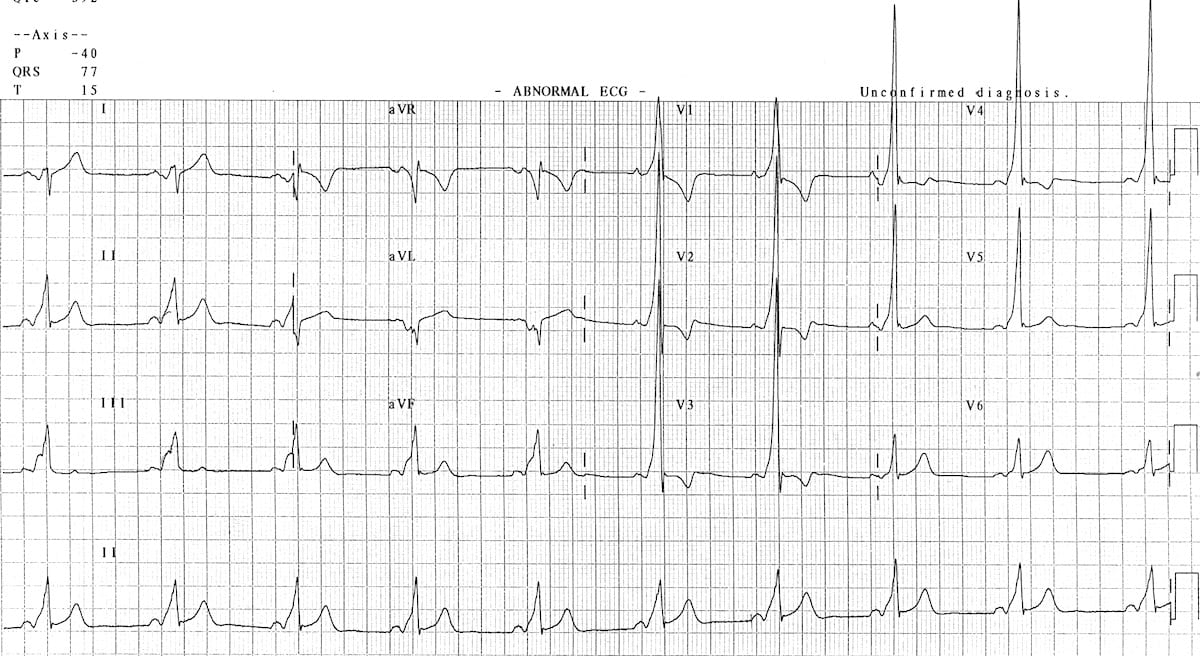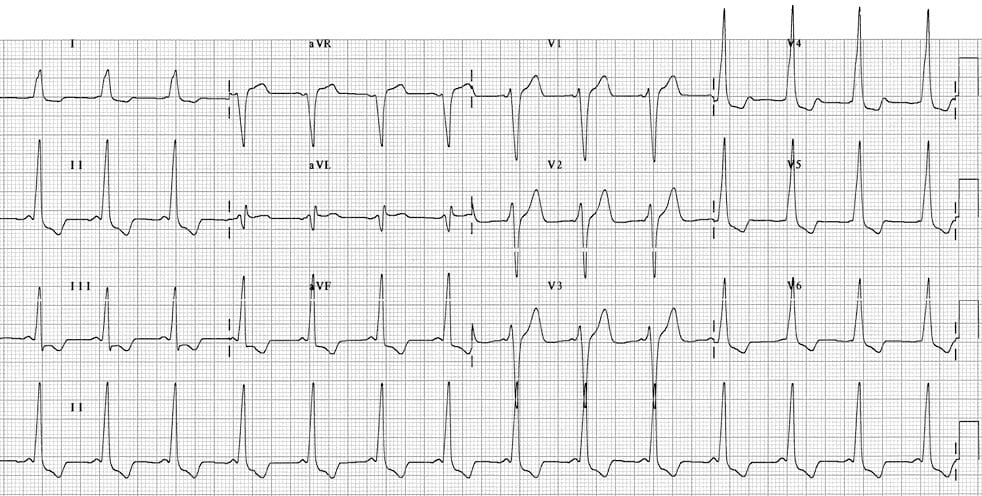Types of Wolff-Parkinson-White Syndrome
There are three types of WPW syndrome.
- Type A is characterized by a positive deflection in precordial leads V1 and V2. This finding represents early activation of the left posterior ventricle.
- Type B is characterized by a negative deflection in precordial leads V1 and V2. This finding corresponds to early activation of the anterior and superior regions of the right ventricle.
- Type C is characterized by patterns of negative delta waves in the precordial leads V5 and V6.
The origin and insertion of the accessory pathway influence the polarity of the delta wave and the morphology of the QRS complex. The delta wave and the QRS complex may be positive, negative, or biphasic in some leads. These ECG findings help triangulate and estimate the location of the accessory pathway.

Type A Wolff-Parkinson-White Syndrome ECG 41
The ECG above represents a patient with type A WPW syndrome. There is a sinus rhythm with a PR interval < 0.12 seconds. There is a broad QRS complex with a slurred upstroke, representing the delta wave. A dominant R wave in precordial lead V1 denotes the presence of a left-sided accessory pathway. The tall R waves and inverted T waves in precordial leads V1 through V3 are ECG changes due to WPW syndrome rather than RVH. The negative delta wave in frontal lead aVL is a “pseudo-infarction” pattern since it has a morphology like that seen in a lateral wall infarction.

Wolff-Parkinson-White Syndrome Type B ECG 42
The ECG tracing above represents type B WPW syndrome. In this example, the patient’s ECG shows a sinus rhythm with a short PR interval < 0.12 seconds as well as broad QRS complexes. The QRS complexes are slurred in the upstroke, representing the delta waves. Dominant S waves in precordial lead V1 represent a right-sided accessory pathway—the hallmark of type B WPW syndrome. Tall R waves and downward T waves in frontal leads II, III, and aVF and in precordial leads V4 through V6 point to WPW syndrome rather than LVH.
41 Burns E. Preexcitation syndromes. Life in the fastlane website. Accessed September 24, 2020.
https://litfl.com/wp-content/uploads/2018/08/Type-A-WPW-ECG-3.jpg
42 Burns E. Preexcitation syndromes. Life in the fastlane website. Accessed September 24, 2020.
https://litfl.com/wp-content/uploads/2018/08/WPW-Type-B-ECG-3.jpg